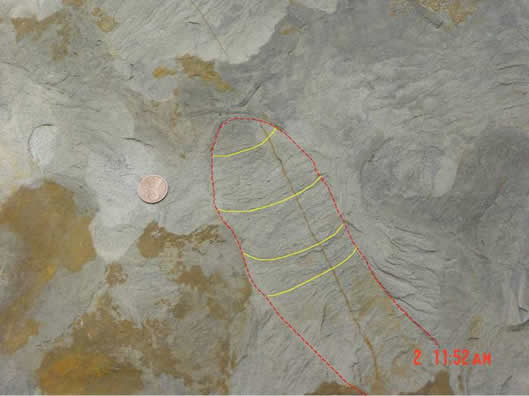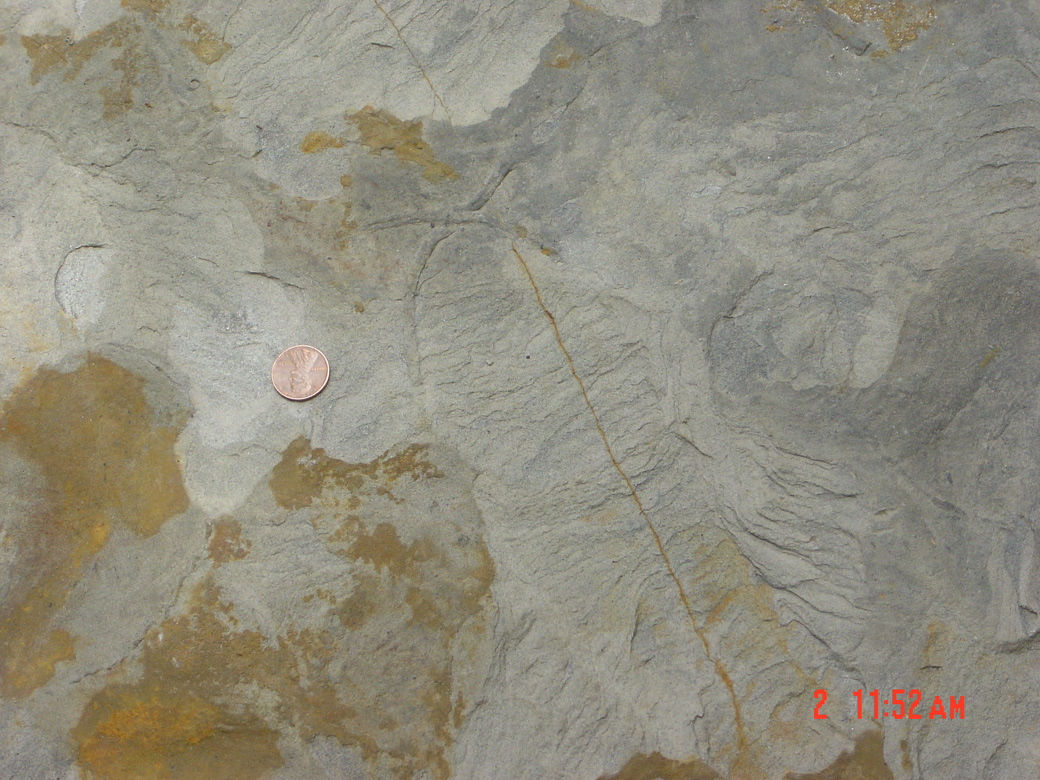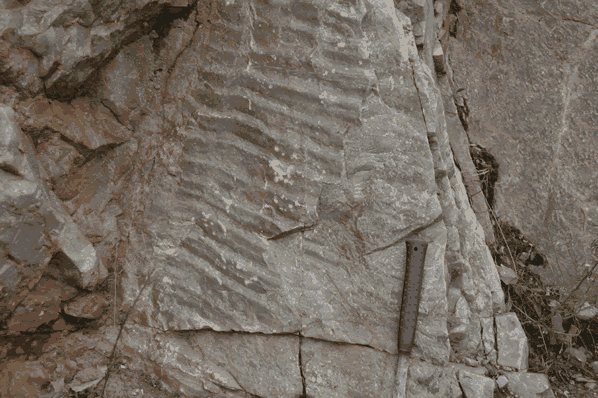Asymmetric Ripples and Cross Beds
Ripples or dunes form by migration of sand particles in a fluid such as water or wind.
This short animation demonstrates the process of formation of asymmetric ripples and cross laminations.
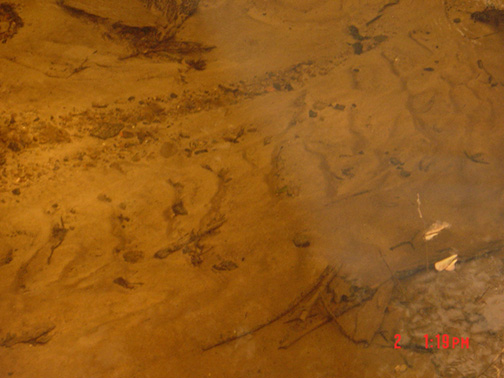
This photo shows ripples forming on the bottom of a small stream bed at Grand Ledge. The stream here is flowing from left to right.
Note the similarity in pattern between the top view of ripples currently forming in the photo above and the truncated ripples preserved in the Pennsylvanian sandstone to the left and below. This is at Grand Ledge.
Click on the video to see Dr. Bill Neal explain in detail the current ripples formed in the photos at left at Grand Ledge, station 1.
This short video shows small dunes forming in Miner's Creek near its mouth along Miner's Beach.
Click here to view it.
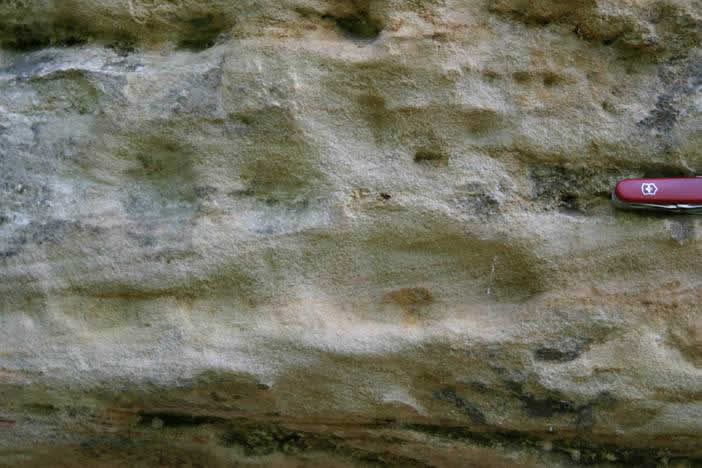
The fine-scale crossbeds or cross laminations observed in the photo above from the Miner's Castle member of the Munising Formation near Munising Falls show changing directions of current flow and were likely deposited by flowing water in a stream.
Click on the link below to see Dr. Ginny Peterson explain the formation of cross bedding in general at Grand Ledge, station 4.
(See Explanation of Cross Beds)
*****More specifically, see Dr. Neal explain the formation of Pennsylvanian channel cross bed sets from Grand Ledge at station 5.
In the photo below, the large scale of the crossbeds in the Cambrian sandstones preserved along the shore at Pictured Rocks National Lakeshore may indicate that these were deposited by wind rather than in a stream.
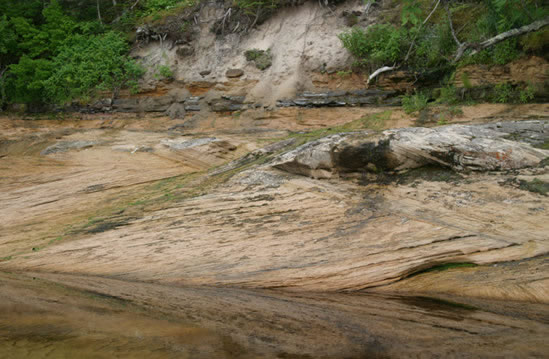
In the photo below, ripples are preserved along the bedding surface of the metamorphosed, Proterozoic Mesnard Quartzite exposed just east of Negaunee, MI.
| Tours | Photos | Videos | References | Maps | Home |
